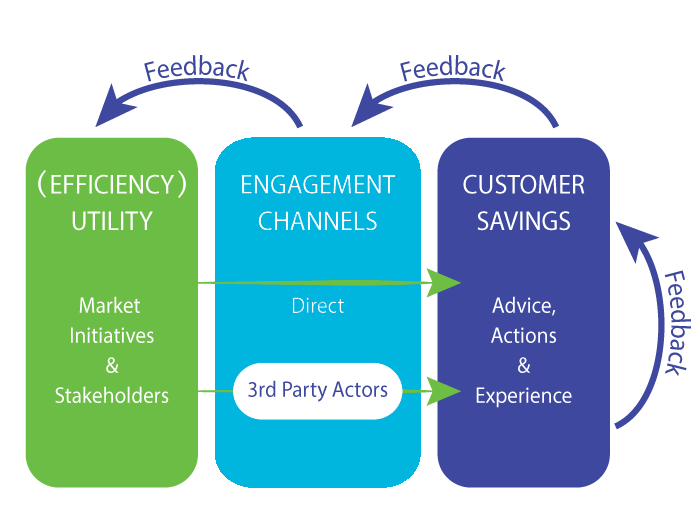Individual and community engagement
Energy efficiency service providers, such as Efficiency Vermont, know that an understanding of the customer is essential to their effectiveness. Multiple factors—including customers’ priorities, budgets, depth of efficiency knowledge and more—have an impact on customers’ decisions to participate in their programs. Mature programs seek to engage customers through multiple channels that generally include a website, rebates and incentives, marketing, and key account management to name just a few. As we strive to move beyond these basic offerings, a deeper understanding of what it means to truly engage customers can provide valuable insights into every facet of energy efficiency program design. The ultimate goal is to engage customers on an optimum level in ways that will enable them to reduce their energy usage, and motivate them to continue seeking even greater savings.
Key Insights
- Recognize and value the individual journey of participation; build customer knowledge and capability through multiple interactions
- Create Initiatives that are simple and accessibly engaging, but not effortless
- Make the path(s) forward clear, progressively challenging, and rewarding
- Build customer feelings of investment in successful outcomes and results
Give the People What They Want: When Customers are Eager Participants
The success of an efficiency initiative is built upon a foundation of effective customer interactions to deliver cost-effective energy savings and meet broad goals [Figure 1].
Customers are a diverse group that includes every ratepayer in the service territory, from large industrial and commercial facilities to institutions, small businesses, multifamily residences, homeowners, and everyone in between. This incredible diversity of audience has always posed a significant challenge for the design and effectiveness of efficiency program outreach.

How do you reach the right customers with the most effective messages—and motivate them to take action? As it turns out, motivating customers requires more than knowing who they are and what value you have to offer them: It is about understanding their experience—and turning what they need into what they want—and even enjoy.
The psychology of engagement has been studied and increasingly understood by scientists, economists, and other experts for years. Conventional energy efficiency programs, in contrast, haven’t yet broadly integrated these perspectives and lessons, and are likely missing tremendous opportunities for greater savings. The real loss, however, is that efficiency programs are not enabling people to become true participants, rather than just customers.